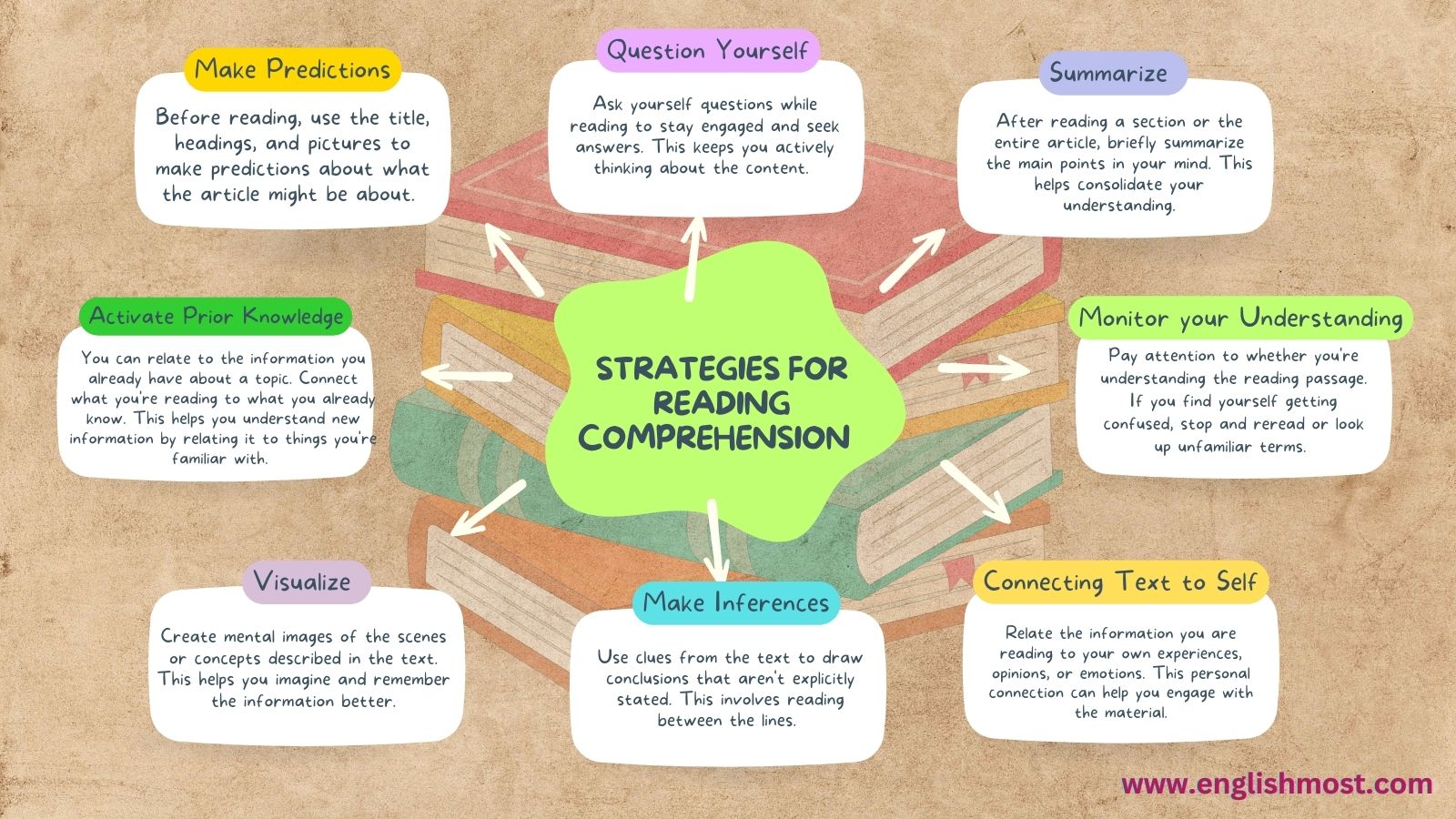Comprehension strategies are techniques readers use to understand and make sense of what they’re reading. Many students struggle with reading comprehension.Here are some common strategies for reading comprehension along with examples using a hypothetical article about climate change:
Make Predictions as a Reading Comprehension Strategy
Before reading, use the title, headings, and pictures to make predictions about what the article might be about. Adjust your predictions as you read to see if they were accurate.
Example: If the title is “The Impact of Climate Change on Marine Life,” you might predict that the article will discuss how rising temperatures affect ocean ecosystems.
Use Prior Knowledge
You can relate to the information you already have about a topic. Connect what you’re reading to what you already know. This helps you understand new information by relating it to things you’re familiar with.
Example: If you already know that greenhouse gases contribute to global warming, you can use that knowledge to better understand the article’s discussion on the causes of climate change.

Visualize or imagine descriptions in the Text
Create mental images of the scenes or concepts described in the text. This helps you imagine and remember the information better.
Example: As you read about melting glaciers, picture ice slowly melting and turning into water, creating rivers and lakes.
Question Yourself
Ask yourself questions while reading to stay engaged and seek answers. This keeps you actively thinking about the content.
Example: While reading about the effects of rising sea levels, you might ask, “How does this impact coastal communities?”
Make Inferences
Use clues from the text to draw conclusions that aren’t explicitly stated. This involves reading between the lines. Example: If the article mentions that polar bears are losing their habitats due to melting ice, you can infer that polar bears are facing increased threats to their survival.
Summarize
After reading a section or the entire article, briefly summarize the main points in your mind. This helps consolidate your understanding.
Example: After reading the article, you might summarize by saying, “The article discussed how climate change is causing rising temperatures, melting ice, and threats to marine life.”
Monitor your Understanding
Pay attention to whether you’re understanding the reading passage. If you find yourself getting confused, stop and reread or look up unfamiliar terms. Example: If you come across a scientific term like “ocean acidification” that you’re not familiar with, take a moment to look up its meaning to better grasp the content.
Connecting Text to Self
Relate the information you are reading to your own experiences, opinions, or emotions. This personal connection can help you engage with the material. Example: If the article discusses ways individuals can reduce their carbon footprint, you might reflect on your own efforts to recycle and conserve energy.
By using these comprehension strategies while reading the hypothetical article on climate change, you’ll be better equipped to understand, remember, and engage with the information presented in the text.
Here is a list of English Comprehension Quizzes and Worksheets:
